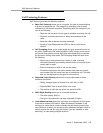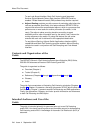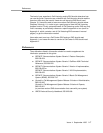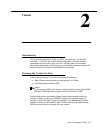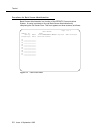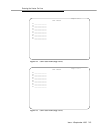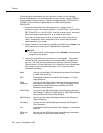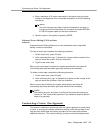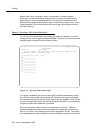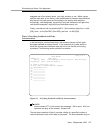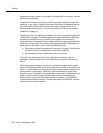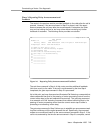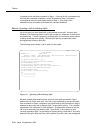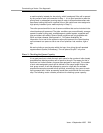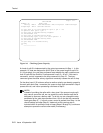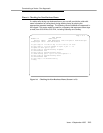
Tutorial
2-6 Issue 4 September 1995
phases until a final ‘‘complete’’ vector is constructed. As each phase is
presented, you are introduced to one or more new vector commands and/or
approaches to vector processing. While it is not practical to present all such
commands and approaches along the way to constructing a single ‘‘final’’ vector,
those presented in this tutorial should allow you to get a good grasp of how to
use Call Vectoring.
Phase 1: Queuing a Call to the Main Split
If a call cannot be immediately answered by an agent (or operator), the call is
usually queued until an agent becomes available. A call can be connected to an
available agent or queued via the following vector:
Figure 2-4. Queuing Call to Main Split
If an agent is available, the
queue-to main split
command automatically sends
the call to the agent without queuing the call. However, if no agent is available,
the command queues the call to the main split (or group) of agents. Once the call
is sent to the main split queue, the call remains there until either it is answered by
an agent or some other treatment is provided.
Each call queued to a split occupies one queue slot in that split. Calls are
queued sequentially as they arrive according to the assignment of the priority
level. In our vector, note the priority level
low
is assigned to the call. The priority
level establishes the order of selection for each call that is queued. A call can be
Page 1 of 1
CALL VECTOR
Number: 27 Name: base
Basic?y EAS?n G3V4 Enhanced?n ANI/II-Digits?n ASAI Routing?n
Prompting?n LAI?n G3V4 Adv Route?n
01 queue-to main split 5 pri l
02 _______________
03 _______________
04 _______________
05 _______________
06 _______________
07 _______________
08 _______________
09 _______________
10 _______________
11 _______________



